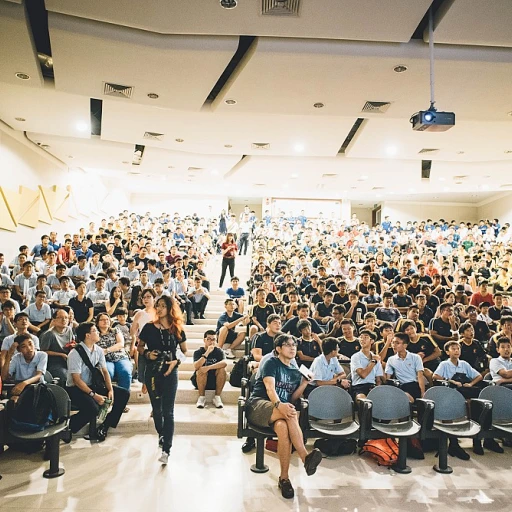
Defining RTO: What Does Return to Office Mean?
Unpacking the Meaning of RTO in Today’s Workplace
Return to Office (RTO) is frequently discussed in modern work culture as organizations navigate the transition out of pandemic-era remote work mandates. RTO essentially refers to the policies and strategies companies implement to bring employees back to the office environment after a period of extensive remote work.
The RTO movement goes beyond merely asking workers to resume pre-pandemic work routines; it represents a deliberate management effort to redefine how office work aligns with the evolving work-life landscape. Companies recognize that a thoughtful RTO plan can significantly influence employee well-being, productivity, and engagement by fostering a dynamic work environment that balances office work with the flexibility of remote work.
For employees, RTO mandates may signal a return to structured office hours, but they also present opportunities for improved communication and collaboration within teams. Many organizations are exploring hybrid work models, which offer the benefits of both in-person and remote interactions, bringing a new dimension to how employees work and communicate.
The Impact of RTO on Employee Productivity and Well-being
The Influence on Efficiency and Employee Well-being
As organizations implement RTO mandates, the effects on employee productivity and overall well-being are worth examining. There is an intricate balance between office work and the flexibility of working remotely, which has become a prevalent subject in discussions on the future of work. The assumption that a physical office setting automatically enhances productivity is being questioned. Many remote workers report high levels of focus and reduced time spent on commuting, contributing positively to both productivity and mental health. Conversely, returning to the office provides opportunities for face-to-face communication, which can foster stronger team building and enhance the company culture. For some employees, the structure that an office environment provides is crucial to maintaining high levels of output. On the other hand, the challenge lies in ensuring that the mandated return doesn’t negatively impact those who find value in the work-life balance that remote work offers. To effectively navigate the transition, it's crucial for companies to consider embracing online tools which can aid in managing hybrid work models. Studies show that an open communication channel between management and employees can significantly elevate engagement levels, ensuring that the employees' well-being is prioritized in any RTO plan. Ultimately, the impact of returning to office environments on productivity and well-being will largely depend on how these policies align with the diverse needs of the workforce. It's imperative that companies develop an RTO policy with the flexibility to adjust and evolve, ensuring that both the business and its employees thrive.RTO vs. Remote Work: Finding the Right Balance
Balancing On-Site and Remote Work
The ongoing transition in work environments has opened a robust dialogue about where work should take place. As employees return to office settings, businesses are navigating the fine line between maintaining productivity and ensuring the well-being of their workforce. There's no denying that this blend, often referred to as hybrid work, has emerged as a popular model. Businesses must consider effective communication channels to uphold high productivity levels. The key is to offer employees the flexibility to communicate seamlessly across different settings, whether they are working remotely or from the office. Encouraging team-building activities that can bridge the gap between in-office and remote employees will foster a cohesive team culture. Notably, rto mandates might not be a one-size-fits-all situation. Companies are exploring various office work configurations to find an equilibrium that supports productivity without compromising employees' mental health. An effective rto plan acknowledges the unique needs of the workforce, allowing for adjustments in workplace policies to better suit individual employees. For employee engagement to thrive, company culture must facilitate an environment where participation and input are valued regardless of physical location. Effective management can ensure this by implementing clear rto policies that stipulate when and how office rto should occur. The emerging evidence from health safety studies suggests that an abrupt return could strain both physical and mental resources of workers. Therefore, staggered or flexible rto approaches are recommended for companies to adapt over time. As https://www.future-of-work.net/blog/understanding-per-diem-work-a-glimpse-into-the-future-of-employment gains traction, its implications on productivity and employee satisfaction become areas of intense focus. Ultimately, straddling the line between a traditional office setup and remote work provides companies the opportunity to innovate their workspaces, contributing to a future-proof working environment.Technological Innovations Supporting RTO
Tech Advancements That Facilitate Office Transitions
In recent years, technological innovations have played a crucial role in supporting a seamless transition for employees as they navigate the nuances of return to office (RTO) mandates. At the forefront of this digital evolution are several tools and platforms designed to bridge the gap between remote work and traditional office settings. Digital communication platforms have emerged as a cornerstone for hybrid work models, enabling teams to maintain productivity and efficient communication irrespective of physical location. These platforms have become integral in nurturing company culture and ensuring robust team collaboration during office work and remote work scenarios. Moreover, with RTO mandates in place, companies are investing in workplace management technologies that promote both health safety and employee engagement. These innovations range from smart office systems that optimize space utilization to digital check-in solutions that enhance workplace safety protocols. Another impactful advancement is the integration of employee wellness and productivity monitoring tools into the office work environment. These technologies provide insights into work-life balance and team-building needs, ensuring that the transition to the office is mutually beneficial for both management teams and individual workers. Adoption of these tech solutions not only supports RTO policies but also caters to the evolving demands of a hybrid work environment. In this rapidly shifting landscape, companies must continue exploring innovative approaches to foster a resilient and adaptable work environment that meets the expectations of their diverse workforce.RTO Policies: What Companies Need to Consider
Crafting Effective RTO Policies for the Modern Workplace
Returning employees to the office requires more than just mandating a specific number of in-office days—companies need to implement thorough RTO policies that account for various aspects of the modern work environment.- Flexible Work Arrangements: Since hybrid work models are becoming the norm, RTO policies should offer flexibility, allowing employees to balance remote days with office work. Flexibility can contribute to better employee engagement and overall work life balance.
- Health and Safety Measures: RTO plans must prioritize the health safety of all workers. This includes adhering to sanitization protocols, ensuring proper ventilation, and managing the use of communal workspaces effectively. Companies should continually evaluate these measures to address any emerging health concerns.
- Clear Communication: Effective communication is key. Companies should articulate their workplace policies transparently so employees understand the expectations and available accommodations. Regular updates on any policy changes are essential for maintaining trust.|
- Building a Supportive Culture: Companies must foster a supportive culture that encourages employee feedback on RTO plans and policies. Open lines of communication between management and employees help in refining policies that meet the needs of both the organization and its workforce.
- Time Management and Productivity: An essential part of a successful RTO policy is helping employees manage their time efficiently. Companies can provide tools and resources to develop skills that enhance productivity both at home and in the office.
The Future of RTO: Trends and Predictions
Trends Shaping the Workplace of Tomorrow
The future of return to office (RTO) is set to evolve as organizations strive to strike a balance between traditional work environments and the flexibility of remote work. Companies are continuously assessing how best to adapt to changing worker expectations and technological advancements. Here are key trends and predictions that will likely shape the workplace in the coming years:- Hybrid Models Becoming the Norm: As the demand for flexibility in work arrangements grows, hybrid work models are expected to become widely adopted. This approach allows employees to split their time between the office and working remotely, catering to diverse work preferences while maintaining productivity and engagement.
- Technological Innovations Accelerating RTO: Technology will continue to play a pivotal role in supporting RTO strategies. Tools that facilitate seamless communication and collaboration will be critical in bridging the gap between in-office and remote workers. Companies investing in tech-driven solutions are more likely to create an efficient work environment.
- RTO Policies with a Focus on Health and Safety: Employee well-being remains a priority, driving the development of comprehensive RTO policies. Organizations will need to ensure that health and safety measures are in place to protect their teams, fostering a secure and conducive workplace.
- Flexible Work Schedules: Companies may increasingly offer flexible schedules as part of their RTO plan. By allowing employees to choose their in-office days and hours, employers acknowledge the importance of work-life balance, which can enhance overall employee satisfaction.
- Emphasis on Company Culture and Team Building: As workers return to the office, fostering a strong company culture and facilitating team building activities will be crucial in promoting engagement and morale. Organizations will need to encourage a collaborative atmosphere while acknowledging the contributions of remote workers.
- Performance-Based Evaluation: In the age of RTO and hybrid work, traditional attendance-based assessments may become less relevant. Companies could shift towards performance-based evaluations, measuring employee contribution through output rather than physical presence in the office.












